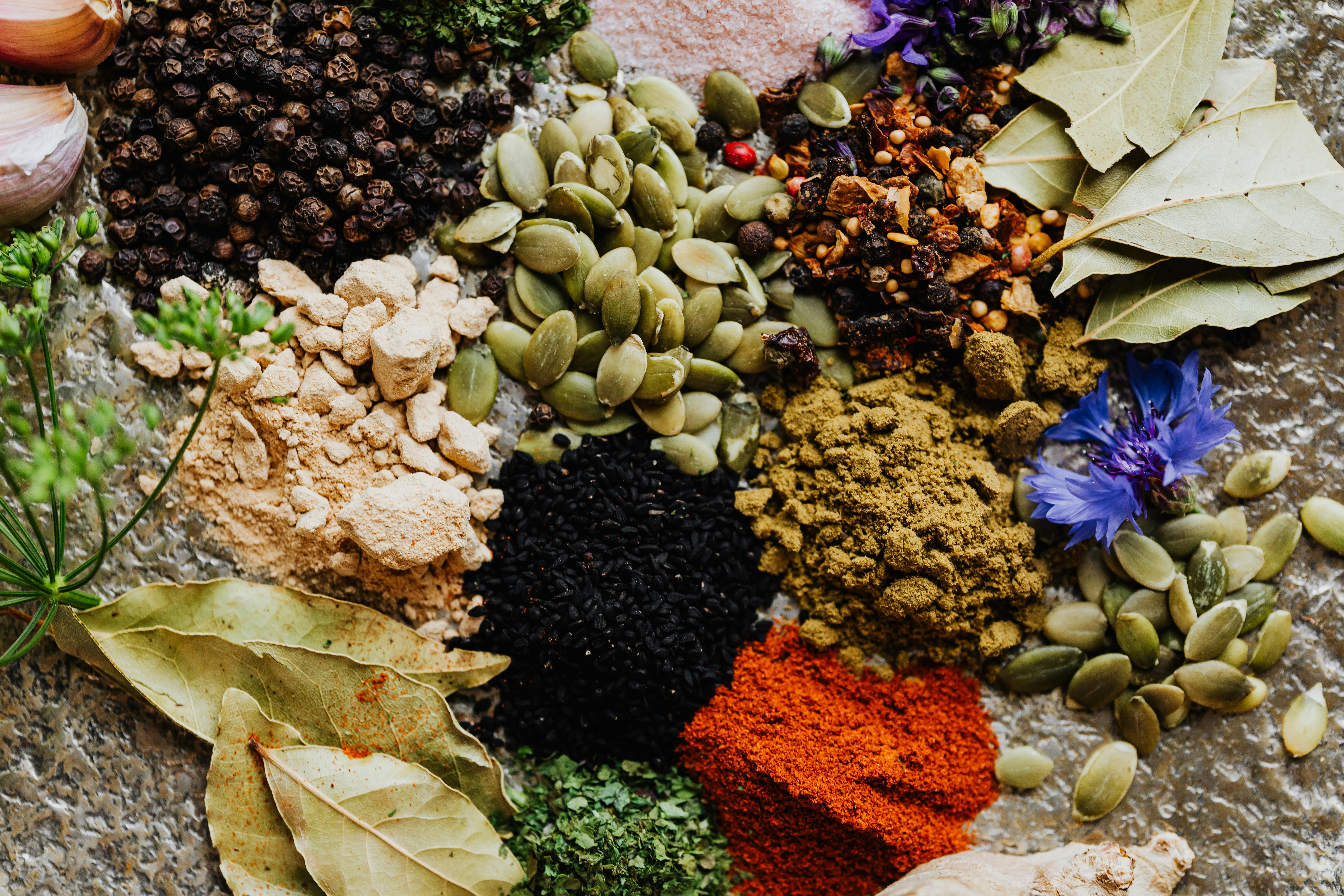
Welcome, fellow food enthusiasts, to a truly flavorful journey where we celebrate the dazzling diversity of spices! We all know that a dash of the right spice can transform a simple meal into an unforgettable feast, awakening our senses and transporting us to far-off lands with every delicious bite. Here at Spice Social, where Chef Gursagar Singh brings globally-inspired Indian food with the freshest ingredients to life, we absolutely adore how spices tell a story and connect us to generations of culinary wisdom.
But let’s be real for a moment: what tastes utterly amazing to one person might raise an eyebrow for another, and that’s the beautiful truth about flavor! While some spices like salt and pepper seem to be universally accepted, the true magic often happens in the unique and sometimes unexpected combinations that create dishes cherished in specific cultures. It’s these very combinations, rich in tradition and bold in flavor, that highlight how our global palates are wonderfully, gloriously diverse, proving that ‘universal’ is often just a starting point.
We’re about to dive deep into ten sensational spice profiles that truly embody this idea, showcasing flavors that are beloved and essential in their native cuisines, even if they’re not always found on every single dinner table across the globe. Get ready to explore the distinctive notes, the incredible aromas, and the rich histories of these culinary powerhouses. You’ll be inspired to bring these unique tastes into your own kitchen and discover new favorites, just as we strive for culinary excellence with our aromatic and flavorful modern Indian dishes right here in Fullerton!

1. **Turmeric’s Earthy Embrace**First up on our flavor adventure is turmeric, a spice that’s as vibrant in color as it is in taste. Known scientifically as *Curcuma longa*, this yellow aromatic root spice is a close relative of ginger and holds a place of honor, especially in Indian cuisine. You might have heard it affectionately called the “golden spice,” and for good reason – its stunning hue instantly brightens up any dish it graces, from rich curries to fluffy rice and hearty stews, giving them a beautiful orange or yellow color that’s a feast for the eyes.
But turmeric is so much more than just a pretty face! Its flavor is uniquely woody and earthy, a profile that truly shines in the complex layering of spices found in many traditional Asian dishes. It’s a taste that, while central to certain culinary traditions, might be an acquired pleasure for palates not accustomed to its deep, grounding notes. This distinct earthy quality is precisely what makes it a non-universal darling, cherished fiercely where it’s understood and appreciated.
Beyond its culinary contributions, turmeric is also gaining widespread recognition for its presence in health drinks, such as the famous Ayurvedic golden turmeric milk. This highlights how certain spices aren’t just about taste; they’re woven into the fabric of wellness and cultural practices, creating combinations that speak to more than just flavor preferences. It’s a spice that invites you to slow down, savor, and appreciate its rich heritage and distinctive character.
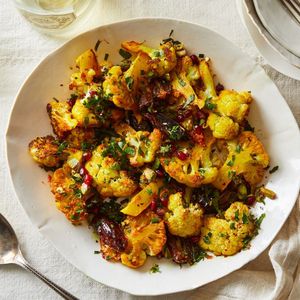
Turmeric-Roasted Cauliflower with Pistachio Gremolata
Ingredients
Equipment
Method
- Preheat oven to 400°F (200°C) and line a large baking sheet with parchment paper for easy cleanup.
- In a large bowl, toss the cauliflower florets with finely grated fresh turmeric (or ground), olive oil, and kosher salt until evenly coated.
- Spread the seasoned cauliflower in a single layer on the prepared baking sheet. Add the pitted and halved dates to the baking sheet alongside the cauliflower.
- Roast for 15-20 minutes, or until the cauliflower is tender and slightly caramelized, and the dates are softened and lightly browned.
- While the cauliflower roasts, prepare the gremolata: finely chop the shelled pistachios and flat-leaf parsley. Finely grate the zest from the lemon.
- In a small bowl, combine the chopped pistachios, parsley, and lemon zest. Add the Aleppo pepper and a squeeze of fresh lemon juice, mixing well.
- Once the cauliflower and dates are done roasting, remove from the oven.
- Arrange the roasted cauliflower and dates on a serving platter.
- Sprinkle the prepared pistachio gremolata generously over the warm cauliflower and dates.
- Garnish with pomegranate arils and serve immediately.
Notes
Read more about: Power Up Your Plate: 15 Essential Foods to Turbocharge Your Immune System This Cold and Flu Season

2. **Cinnamon’s Sweet & Savory Dance**Next, let’s talk about cinnamon, a true superstar in the spice rack and one of the oldest spices known to humankind. It’s consistently on the list of most popular and most aromatic spices, and for good reason – its warming, sweet scent is simply irresistible! Cinnamon is actually the bark of a tree, which is dried and then used in various forms, most commonly as a brown powder that lends its magic to countless dishes around the world.
What makes cinnamon so fascinating and a perfect example of non-universal appeal in combinations is its incredible versatility. While many in Western cultures primarily associate it with sweet treats like pastries, apple pies, or a sprinkle on morning coffee, its role in many other cuisines is wonderfully different. In numerous savory dishes, particularly in Indian, Middle Eastern, and North African cooking, cinnamon adds an unexpected depth and warmth that balances other spices beautifully. This sweet-savory dance is a prime example of flavor combinations that truly differ across cultures.
When you’re choosing your cinnamon, you might come across terms like “Ceylon cinnamon” and “Cassia cinnamon.” Ceylon is considered the true cinnamon, offering a more delicate and nuanced flavor, while Cassia is more common and has a bolder, spicier kick. Both are fantastic, but the subtle differences further illustrate how even within a single spice category, variations can create slightly different flavor experiences that resonate uniquely across diverse global palates. It’s a spice that constantly surprises and delights, proving its adaptability and enduring charm.
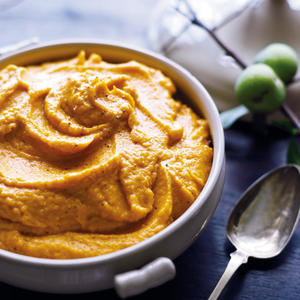
Cinnamon Sweet Potatoes with Vanilla
Ingredients
Equipment
Method
- Peel the sweet potatoes and cut them into approximately 3-inch chunks, ensuring uniform size for even cooking.
- Place the sweet potato chunks into a large pot and pour in the reduced-sodium chicken broth.
- Bring the broth and sweet potatoes to a boil over medium-high heat, then reduce the heat to a simmer, cover the pot, and cook for 20-25 minutes, or until the sweet potatoes are very tender when pierced with a fork.
- Carefully drain the cooked sweet potatoes thoroughly, discarding the broth, and return the sweet potatoes to the dry pot.
- Using a potato masher, mash the sweet potatoes to your desired consistency – smooth or with a few small lumps.
- In a separate small saucepan, gently heat the fat-free milk and butter over low heat until the butter is melted and the mixture is warm; do not boil.
- Pour the warm milk and butter mixture over the mashed sweet potatoes, then add the ground cinnamon and vanilla extract.
- Stir vigorously with a spoon or whisk until all ingredients are well combined and the sweet potatoes are creamy and uniformly seasoned.
- Taste the mashed sweet potatoes and adjust seasonings if necessary, adding a pinch of salt if desired to enhance the flavors.
- Serve the Cinnamon Sweet Potatoes with Vanilla warm as a delightful and aromatic side dish.
Notes
Read more about: The Everyday Spices and Herbs That Can Naturally Lower Your Blood Pressure
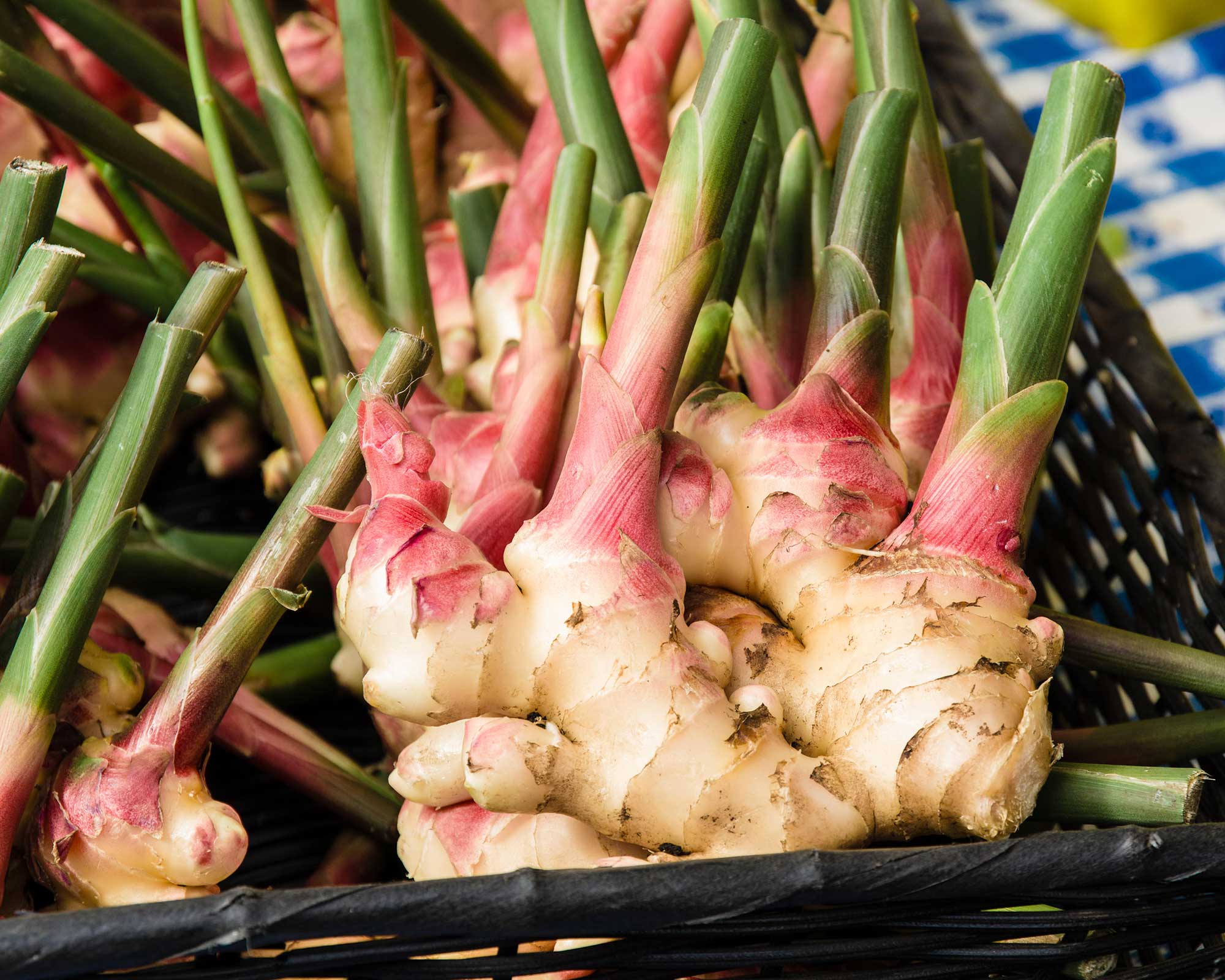
3. **Ginger’s Zesty Kick**Prepare your taste buds for a lively jolt with ginger, a spice that truly knows how to make an entrance! This amazing ingredient comes from the root of the *Zingiber officinale* flowering plant, much like its cousin turmeric. You’ll recognize it by its pale-yellow flesh and its wonderfully aromatic, slightly fibrous texture. Ginger isn’t shy; it brings a powerful and distinctive flavor to the table that is both spicy and subtly sweet, with bold peppery notes and a vibrant zesty overtone.
Ginger is a cornerstone of flavor in many Asian dishes, defining the taste profiles of Japanese, Thai, and Chinese cuisines, among others. Its sharp, fresh bite can cut through richness, add warmth, and provide an invigorating finish to everything from stir-fries and soups to marinades and sauces. The way ginger is used – whether chopped fresh, juiced, grated, or powdered – dictates the intensity and nuance of its contribution, allowing for a wide spectrum of flavor combinations that are deeply entrenched in these culinary traditions.
While ginger’s zesty kick is adored in its native regions, its pronounced, almost fiery character can be quite specific to certain palates. It’s a flavor that can either be a cherished favorite or something that takes a little getting used to, demonstrating how certain bold profiles aren’t universally embraced as readily as others. Even a simple, delicious hot drink made with ginger showcases its unique, invigorating warmth that many swear by, making it a truly non-universal yet universally beloved spice within its cultural context.

Creamy Cilantro Chicken with a Kick
Ingredients
Equipment
Method
- Prepare all fresh ingredients: mince garlic, finely chop serrano peppers, mince fresh ginger, chop cilantro, and grate lime zest.
- In a mixing bowl, combine the minced garlic, chopped serrano peppers, minced ginger, half of the chopped cilantro, grated lime zest, soy sauce, and white sugar to form the marinade.
- Add the boneless, skinless chicken thighs to the marinade, ensuring they are thoroughly coated. Cover and refrigerate for at least 30 minutes, or up to 60 minutes.
- Heat a large skillet or Dutch oven over medium-high heat. Remove chicken from the marinade, reserving the marinade for the sauce.
- Sear the chicken thighs for 3-5 minutes per side until beautifully golden brown, creating a flavorful crust.
- Pour the reserved marinade into the hot skillet, scraping up any browned bits from the bottom of the pan to deglaze and incorporate extra flavor.
- Stir in the unsweetened coconut milk and bring the sauce to a gentle simmer, ensuring it is well combined.
- Return the seared chicken thighs to the skillet, nestling them into the simmering sauce.
- Reduce the heat to medium-low, cover, and let the chicken simmer for 20-25 minutes, or until the chicken is cooked through and very tender.
- Remove the lid, increase the heat slightly, and continue to simmer uncovered for another 5-10 minutes to allow the sauce to reduce and thicken to your desired consistency. Garnish with the remaining fresh cilantro before serving.
Notes
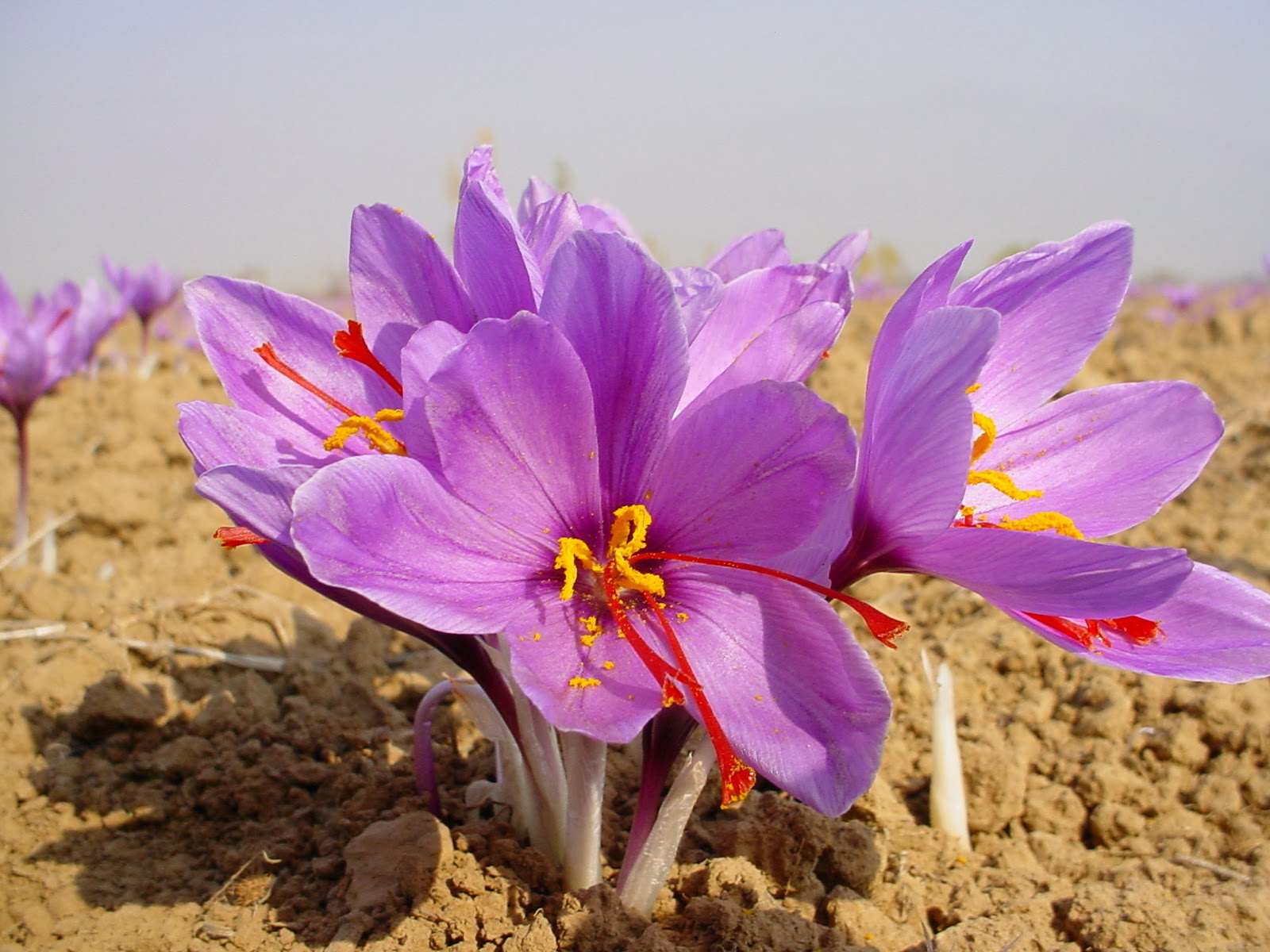
4. **Saffron’s Luxurious Floral Notes**Now, let’s turn our attention to the spice royalty: saffron. Often heralded as the most expensive spice in the world, saffron is truly a treasure. It’s not just its cost that makes it unique, but its appearance – delicate, small, thin orange threads, which are actually the stigmas of the saffron crocus. These tiny threads hold an incredible power, infusing food with an exquisite character that is hard to replicate.
Saffron is listed among the sweet spices, but its flavor profile is far more complex than just sweetness. It offers a distinct floral and slightly sweet taste and aroma that is incredibly delicate yet undeniably potent. Just a tiny pinch can give dishes an excellent, vibrant golden color and a sophisticated, ethereal flavor. This unique combination of floral notes and subtle sweetness is a prime example of a flavor profile that, while highly prized in certain culinary traditions, isn’t something every palate automatically gravitates towards. It’s a taste that speaks of luxury, tradition, and a very specific kind of beauty.
As a culinary spice, saffron is a star in Persian, Middle Eastern, and European cuisines, where it’s integral to iconic dishes like paella, risotto, and various rice preparations. The beautiful thing about saffron is that, despite its expense, a little goes an incredibly long way. Its subtle yet profound impact transforms meals into something truly special, making it a cherished, though non-universal, element that defines gourmet experiences in these rich culinary landscapes. It’s a testament to the fact that some of the most extraordinary flavors are found in the most precious and unique ingredients.
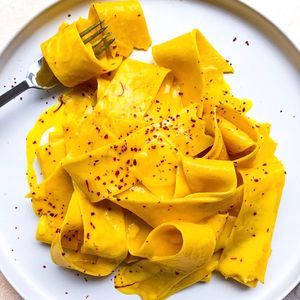
Golden Saffron Pasta
Ingredients
Equipment
Method
- Place a generous pinch of saffron threads into a small heatproof bowl and pour 1/3 cup (80 ml) hot (but not boiling) water over them; let bloom for at least 5 minutes.
- Bring a large pot of generously salted water to a rolling boil and cook your pasta of choice according to package directions until al dente.
- While the pasta cooks, add 1/3 cup (80 ml) dry white wine to a medium saucepan and bring to a simmer over medium heat, reducing until about 1 tablespoon remains.
- Add the bloomed saffron and its liquid, along with 1/3 cup (80 ml) heavy cream, to the saucepan. Bring to a gentle simmer and cook for 2-3 minutes to allow the flavors to meld.
- Before draining the pasta, reserve about 1 cup of the starchy pasta water. Drain the pasta thoroughly.
- Transfer the drained pasta directly into the saucepan with the saffron cream sauce.
- Off the heat, add the cold unsalted butter (2 tablespoons first, then the remaining 1 tablespoon) to the pasta and sauce. Whisk or toss vigorously until the butter is fully melted and emulsified, creating a glossy sauce.
- Add a splash or two of the reserved pasta water as needed to achieve your desired sauce consistency, ensuring the sauce coats the pasta beautifully.
- Season the pasta generously with kosher salt to taste, adjusting as needed.
- Serve immediately, garnished with a pinch of Aleppo pepper or red pepper flakes if desired, for a touch of warmth and color.
Notes
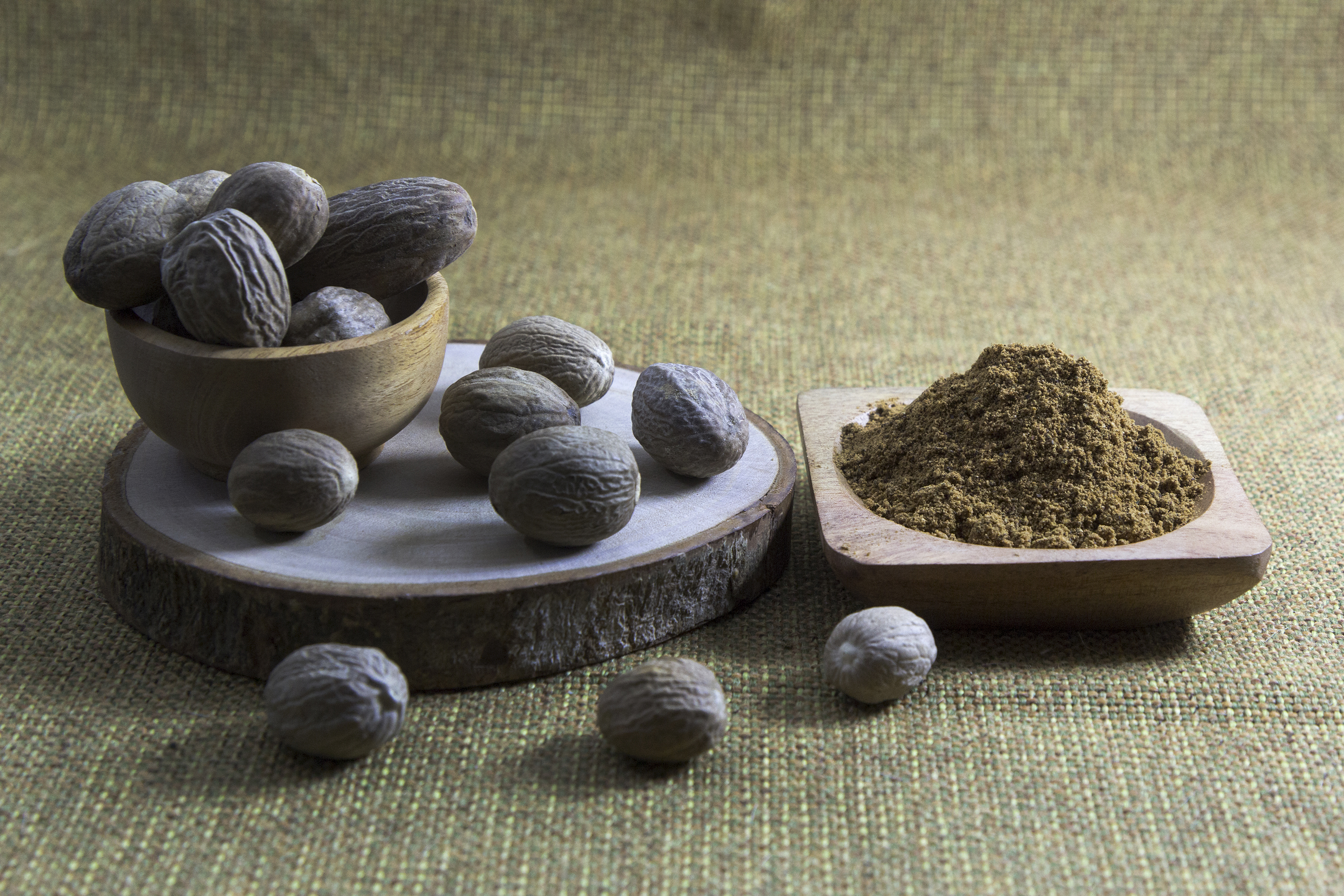
5. **The Nutmeg & Mace Duo**Rounding out our first five incredible spice explorations, we have the dynamic duo of nutmeg and mace – two spices that come from the same plant but offer slightly different nuances to our culinary world. Nutmeg, known botanically as *Myristica*, is the hard seed or nut of a tree, revered for its wonderfully fragrant aroma and its warming, sweet taste. It’s typically grated into a powder, ready to impart warm, cozy flavors to both sweet and savory dishes.
Nutmeg’s profile is one that often brings a sense of comfort and tradition, especially when combined with other spices like cinnamon, as it frequently is in various spice mixes. It’s a beloved ingredient across Caribbean, Indonesian, Indian, and European cuisines. Think about how it perfectly complements a hearty lamb stew, rich tomato dishes, or even simple vegetable preparations. And for those cold weather days, its comforting aroma makes it a popular ingredient in drinks like mulled wine, showcasing a combination of warmth and spice that is deeply cherished.
Now, for mace – the hidden gem that often gets overshadowed by its more famous sibling. Mace is the reddish covering around the nutmeg seed, and while its taste is similar to nutmeg, it’s distinctly milder. When dried, mace takes on a beautiful yellow-brownish color. Because of its delicate and subtle flavor, offering sweet hints of lemon and a delicate nutmeg essence, mace is commonly used in desserts. This milder, more nuanced flavor makes it distinct, and while many might associate nutmeg with bold flavors, mace’s gentle touch in sweet preparations highlights another unique, non-universal flavor preference that finds its perfect home in specific culinary creations. It’s a testament to how even closely related spices can carve out their own unique and beloved niches in the diverse world of gastronomy.
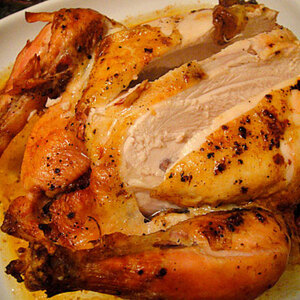
Cook the Book: Chicken with Nutmeg
Ingredients
Equipment
Method
- Preheat your oven to 400°F (200°C).
- Pat the chicken thoroughly dry with paper towels. Season generously inside and out with salt and freshly ground black pepper.
- Grate half a whole nutmeg and rub it inside the chicken cavity. Quarter the lemon and place it inside the cavity.
- Heat a heavy-bottomed roasting pan or oven-safe skillet over medium-high heat with a drizzle of extra-virgin olive oil.
- Place the prosciutto slices in the hot pan and cook until crisp. Remove and set aside.
- Add the chicken to the pan, breast-side down, and sear until golden brown (about 8-10 minutes). Flip and sear all sides for even browning.
- Deglaze the pan with white wine, scraping up any browned bits from the bottom.
- Transfer the pan to the preheated oven and roast for approximately 1 hour 15 minutes to 1 hour 30 minutes, or until an internal temperature of 165°F (74°C) is reached in the thickest part of the thigh.
- Remove chicken from oven, transfer to a cutting board, tent with foil, and rest for 10-15 minutes.
- While the chicken rests, simmer the pan drippings briefly on the stovetop to reduce slightly. Carve the chicken, garnish with crumbled prosciutto, and serve with the pan sauce.
Notes
Read more about: 15 Unexpected Menu Items That Make Bartenders Secretly Roll Their Eyes — Straight From the Bar Experts Themselves
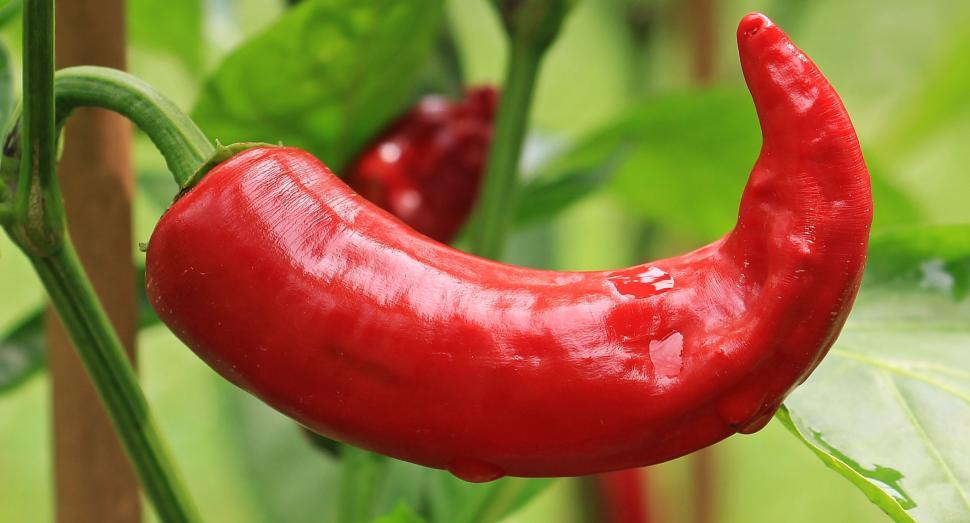
6. **Cayenne Pepper’s Fiery Embrace**Ready to add a thrilling kick to your culinary creations? Our next spotlight shines brightly on cayenne pepper, a spice that truly knows how to bring the heat! This vibrant red, hot, and intensely spicy powder is made by grinding dried cayenne peppers, capturing their potent warmth in every granule. It’s the ultimate secret weapon for anyone looking to dial up the flavor and excitement in their meals, transforming bland into brilliantly bold with just a pinch.
Cayenne pepper isn’t just about raw heat; it delivers a sharp, biting taste that can awaken your palate and create unforgettable flavor experiences. It’s an absolute rockstar when paired with seafood, adding a zesty punch that complements the delicate flavors of shrimp or fish. Imagine it sizzling in your curries, enriching casseroles, or becoming the heart and soul of your favorite hot sauces, making every bite a thrilling adventure.
It’s also incredible in marinades for grilling, giving chicken or steak a beautiful crust and a deep, lingering warmth. Don’t be shy about experimenting with it in unexpected places, like a sprinkle in your hot chocolate for a surprising, delightful twist! Cayenne pepper proves that sometimes, a little bit of fire is exactly what a dish needs to go from good to absolutely sensational, challenging our palates in the best possible way.
What’s really cool about cayenne is its versatility. While many varieties are undeniably hot and pungent, you can actually find milder versions if you crave that distinct chili taste without overwhelming your senses. This means you can customize the intensity to perfectly suit your dish and your diners, making cayenne pepper an adaptable powerhouse in any kitchen. It’s a spice that promises to keep things exciting and incredibly delicious!

Sambal Potatoes With Aioli
Ingredients
Equipment
Method
- Preheat your oven to 400°F (200°C). Wrap the whole garlic head in foil and roast for 30-40 minutes until tender; let cool, then squeeze out cloves and mince the roasted cloves.
- In a large pot, boil baby potatoes until just tender. Drain well. Toss the hot potatoes with 3 tablespoons neutral oil, 1/2 teaspoon kosher salt, and 1/8 teaspoon black pepper on a baking sheet. Roast for 20-25 minutes, or until golden and slightly crispy.
- While potatoes roast, heat 5 tablespoons neutral oil in a large skillet or Dutch oven over medium heat. Add chopped shallot, red chiles, and sliced ginger. Sauté for 5-7 minutes until softened and fragrant.
- Add the minced roasted garlic cloves (from the head) and the can of chopped tomatoes to the skillet. Simmer for 10-15 minutes, mashing tomatoes with a spoon, until the mixture thickens and flavors meld. Season with salt to taste.
- Transfer the sambal mixture to a food processor or blender. Blend until smooth or to your desired consistency. Set aside.
- In a small bowl, combine mayonnaise, 3 minced fresh garlic cloves, 1 teaspoon lemon juice, and 2 tablespoons finely sliced chives. Season the aioli with salt and pepper to taste, adding more lemon juice if desired.
- Once roasted, toss the potatoes gently with the prepared sambal until evenly coated.
- Transfer the sambal potatoes to a serving platter.
- Spoon or dollop the roasted garlic aioli generously over the potatoes.
- Garnish with the remaining 1 tablespoon of finely sliced chives and serve immediately.
Notes
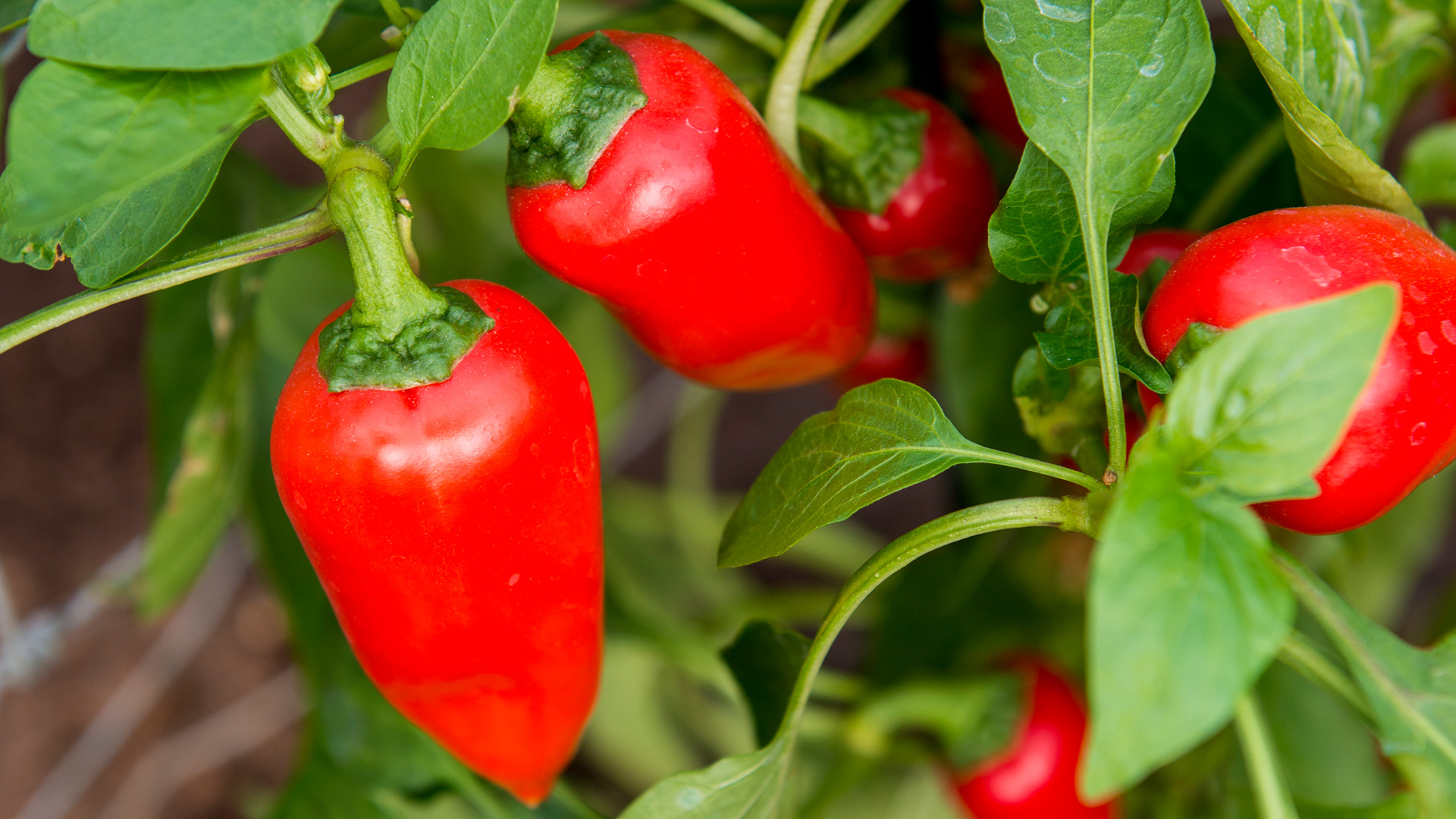
7. **Paprika’s Colorful Charm**Stepping into a slightly different, yet equally captivating, flavor arena, we have paprika – a spice that’s as much about vibrant color as it is about delicious taste. Unlike its fiery cousin, cayenne pepper, paprika is crafted from ground dried bell peppers. This difference is key because it allows paprika to offer a wonderfully diverse range of flavor experiences, making it a true artist in the spice world, enriching dishes without always bringing intense heat.
You might be surprised by the many faces of paprika! Sweet paprika, for example, is a master at adding a lovely, slightly earthy sweetness to dishes, enriching them with a gorgeous reddish hue. This makes it perfect for sprinkling over eggs, infusing rice dishes, or adding a gentle warmth to stews where a milder flavor is preferred. It’s all about adding depth and visual appeal.
Then there’s hot paprika, the undeniable star of authentic Hungarian goulash, which brings a welcome warmth and depth that’s both comforting and invigorating. It provides a more pronounced chili flavor, marrying beautifully with other robust ingredients. And for those who love a smoky twist, smoked paprika delivers an irresistible campfire aroma and flavor to everything from stews and barbeque sauces to simple roasted vegetables and even a dusting on popcorn for a gourmet snack.
Paprika’s ability to offer such distinct flavor profiles from a single family of peppers is truly fascinating. It’s a testament to how subtle variations in preparation can lead to dramatically different culinary outcomes, proving that some flavor combinations are treasured for their nuanced contributions rather than just a single, dominant note. Whether you’re aiming for color, warmth, or a rich smokiness, there’s a paprika for every craving, inviting you to explore its vibrant palette of tastes.
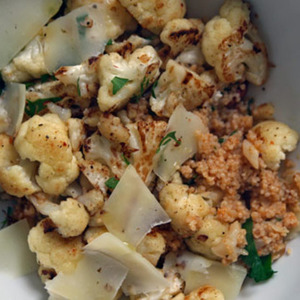
Seared Cauliflower with Couscous and Almonds Recipe
Ingredients
Equipment
Method
- In a dry large skillet, toast whole almonds over medium heat, stirring frequently, until fragrant and lightly browned. Remove almonds and set aside.
- Cut the cauliflower into bite-sized florets. Mince the shallot or small red onion.
- Heat 2 tablespoons of olive oil in the same large skillet over medium-high heat. Add cauliflower florets in a single layer and sear, turning occasionally, until golden brown and tender-crisp. Remove from pan and set aside.
- Add the remaining 1 tablespoon of olive oil to the skillet. Sauté the minced shallot (or onion) until softened, about 2-3 minutes.
- Stir in the smoked paprika and cook for 30 seconds until fragrant, being careful not to burn it.
- Pour in the vegetable stock and bring to a boil. Season with salt and pepper to taste.
- Remove the skillet from heat, stir in the couscous, cover tightly with a lid, and let stand for 5-7 minutes until all the liquid is absorbed.
- Uncover and fluff the couscous with a fork.
- Gently fold in the seared cauliflower, toasted almonds, and chopped parsley into the couscous.
- Taste and adjust salt and pepper as needed before serving warm.
Notes

8. **Chili Powder Blends: A Symphony of Spice**Now, let’s talk about something truly special: chili powder blends! While “chili pepper” refers to the individual dried, ground fruit that brings direct heat and spice to your Caribbean, Indian, or Mexican dishes, “chili powder” often signifies something much more intricate. It’s not just a single ingredient; it’s a brilliant medley, a curated concert of spices working together to create a profoundly rich and complex flavor profile that forms the backbone of countless beloved cuisines.
When you reach for a jar of chili powder, especially in Latin American cooking, you’re often grabbing a thoughtfully composed blend. This sensational mix typically includes chili powder itself, providing that essential warmth and depth, alongside the vibrant color and earthy notes of paprika. But the flavor journey doesn’t stop there! It also often features the warm, pungent kick of cumin, the aromatic magic of garlic powder, and the subtle, peppery freshness of oregano, each contributing a vital layer to the overall experience.
This masterful combination ensures a balanced flavor that’s both robust and inviting, making it incredibly versatile. It’s perfect for seasoning meats, enhancing bean dishes, or creating a flavorful base for sauces and marinades. The blend is designed to offer a complete flavor profile, saving you the hassle of measuring out individual spices, which makes it a practical and exciting choice for busy home cooks who want big flavor fast.
This intricate layering of flavors is precisely why chili powder blends are so non-universal, yet so deeply cherished within their cultural contexts. Each ingredient plays its part, contributing to a harmonious whole that is utterly foundational to dishes like hearty chili con carne or flavorful taco seasonings. It’s a perfect example of how specific combinations, carefully balanced and perfected over generations, become irreplaceable pillars of culinary identity, inviting us to appreciate the art of spice blending.
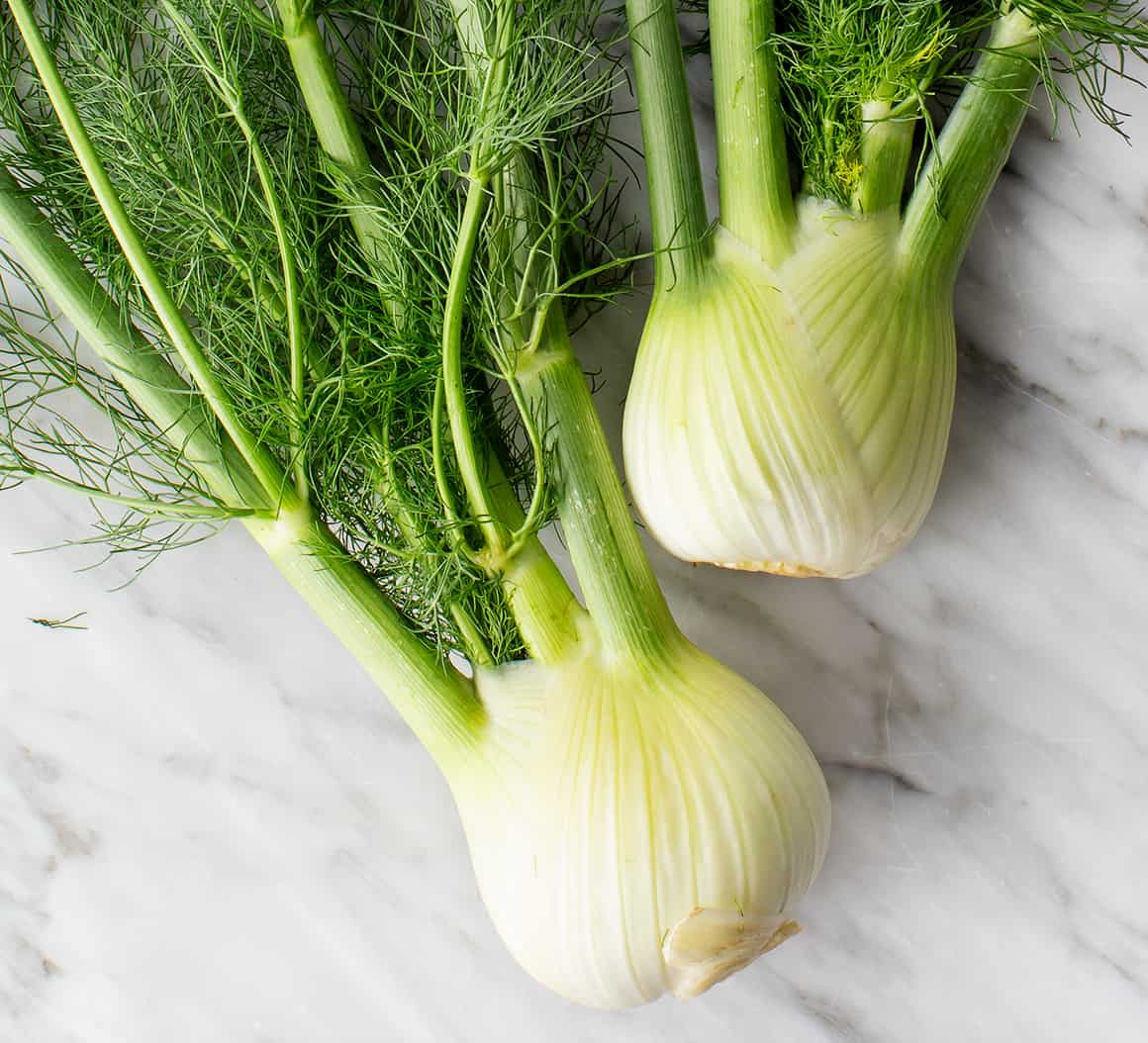
9. **Fennel’s Aromatic Elegance**Moving to a spice with a truly distinctive charm, let’s explore fennel! This fascinating ingredient, often listed among the sweeter spices, boasts a light, ethereal licorice flavor and a wonderfully aromatic bouquet. It’s a taste that, while unique, shares a delightful kinship with anise spice, leading to its frequent use in dishes where a subtle, sophisticated sweetness is desired. Fennel brings an elegant, almost delicate, dimension to cooking that is truly captivating.
Hailing from the sun-drenched Mediterranean countries, ground fennel seeds have long been a cherished component in the vibrant cuisines of France, Italy, Spain, and across the Middle East. It’s the kind of spice that can elevate a simple fish dish, add complexity to a savory sausage, or infuse baked goods with an unexpected, fragrant twist. Its presence speaks to a refined palate, one that appreciates nuances and the way flavors can intertwine gracefully.
Imagine the subtle crunch and aromatic burst of whole fennel seeds baked into rustic bread or infused into a delicate broth for seafood. It’s a spice that doesn’t scream for attention but rather whispers, leaving a memorable impression of warmth and sophistication. This makes it an ideal choice for dishes where you want to add a unique flavor without overpowering other ingredients, letting everything shine in perfect harmony.
Fennel’s influence extends far beyond these traditional European and Middle Eastern applications, making it a truly global player! You’ll find its distinctive notes lending character to exotic spice mixes, such as the renowned Chinese five-spice powder, where its sweetness balances other bolder flavors. It’s also one of the essential spices that forms the heart of Indian garam masala, demonstrating its incredible versatility. And let’s not forget that the fresh fennel leaves are also celebrated as aromatic herbs, offering another layer of flavor. It’s a spice that truly showcases how a single plant can provide multiple culinary treasures, each with its own special place!
10. **The Unbeatable Duo: Coriander and Cumin**If there’s a power couple in the world of spices, a duo that forms the very bedrock of countless iconic dishes, it has to be coriander and cumin! These two incredible spices, often found hand-in-hand, represent a foundational flavor combination that is absolutely essential in many global cuisines, even if their particular blend might not be universally embraced. Let’s dive into why this pair is so deeply cherished and how they create magic together.
First, we have coriander seeds, which, whether used whole or freshly ground, bring a beautiful, sweet citrusy taste to the table. This bright, zesty note is absolutely crucial in both Mexican and Indian dishes, where it adds a refreshing counterpoint to richer, warmer flavors. To truly unlock their full potential, dry-frying these small brown, round seeds before grinding is a game-changer; it releases their essential oils and intensifies their sweet, pungent aroma, making them even more captivating.
Then there’s cumin, with its Latin name *Cuminum cyminum*, distinguishing it from other similarly named spices. Cumin brings a distinctive spicy, nutty flavor with deep, earthy undertones that provide a grounding base. This spice is an absolute staple, used extensively alongside coriander and other aromatic companions in the diverse culinary landscapes of Asian, African, Mexican, Tex-Mex, and Indian cuisines. It’s truly a global citizen, having been widely adored in ancient Greek, Moroccan, and Roman cooking—so much so that some countries still affectionately refer to it as “Roman cumin.”
The beauty of this dynamic duo lies in their complementary nature. Coriander provides the bright, almost floral top notes, while cumin delivers the earthy, smoky base. Together, they create a depth of flavor that is both complex and comforting, forming the aromatic soul of everything from hearty lentil stews and vibrant vegetable curries to succulent grilled meats. It’s this intricate balance that makes their pairing so celebrated in so many traditional recipes.
Moreover, the preparation of coriander and cumin further illustrates their impact. Grinding them fresh, often after a quick toast, amplifies their aromas and flavors immensely, contributing to a truly authentic taste experience that’s hard to replicate with pre-ground spices alone. This emphasis on fresh preparation highlights how integral these spices are to the culinary process in cultures where they reign supreme.
This synergistic blend truly embodies the idea that while specific flavor pairings might not appeal to every single palate on the planet, they are undeniably indispensable and deeply beloved within their traditional homes. So, next time you’re whipping up a curry or a hearty stew, remember the incredible journey these two spices have taken, and the delicious harmony they bring to your plate!
And there you have it, fellow flavor adventurers! Our journey through these ten incredible spice profiles has hopefully sparked your curiosity and emboldened your culinary spirit. From turmeric’s golden glow to the fiery kick of cayenne, the nuanced layers of paprika, the aromatic elegance of fennel, and the foundational power of the coriander and cumin duo, we’ve seen how each spice, and especially their unique combinations, tells a captivating story of culture, tradition, and taste. So go ahead, open your spice rack, be brave, and let these non-universal, yet utterly brilliant, flavor pairings inspire your next magnificent meal! Your taste buds (and your family and friends!) will thank you.



